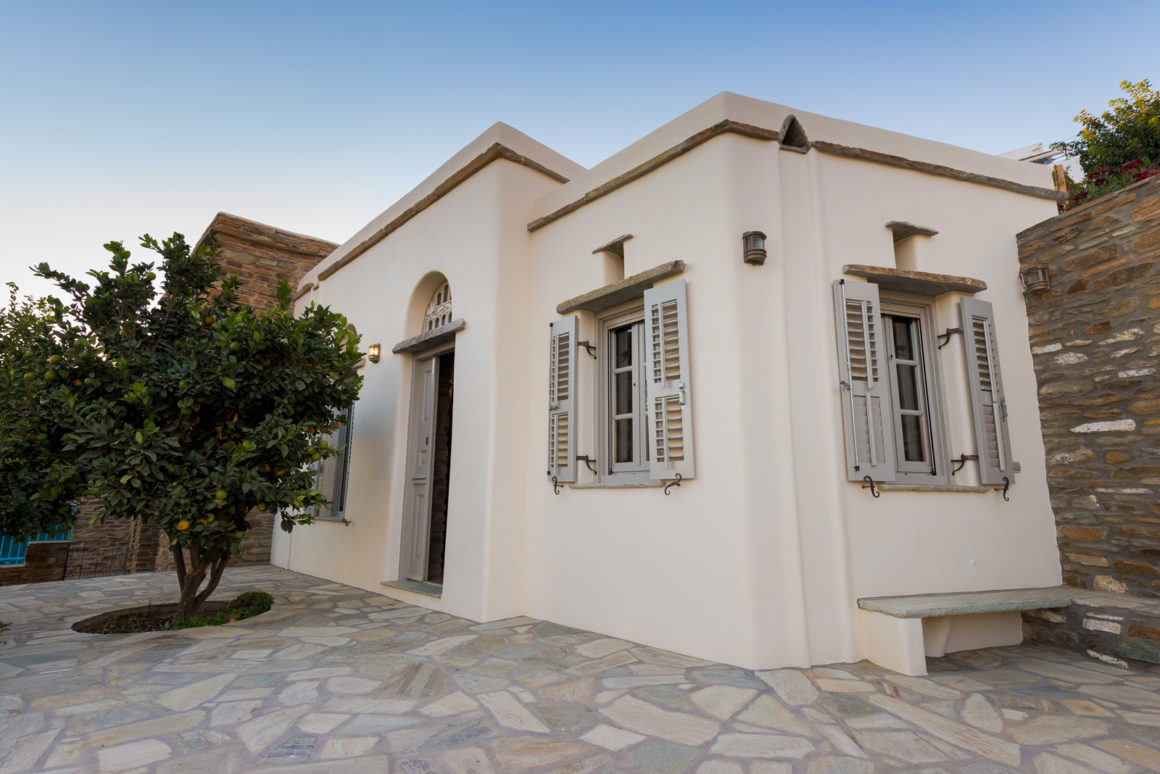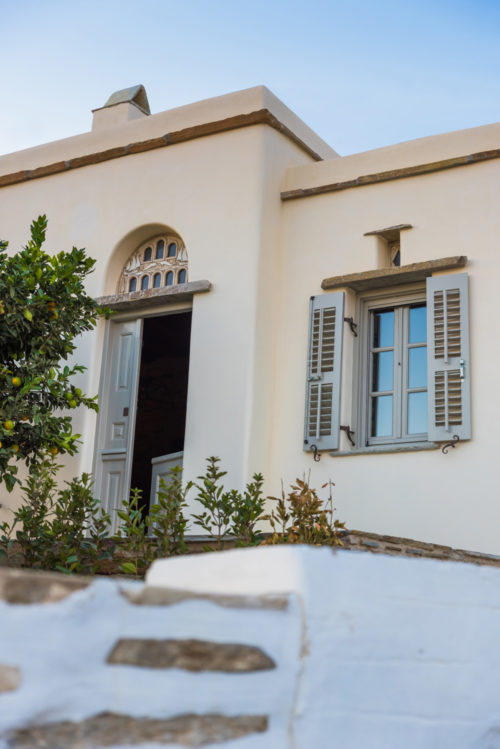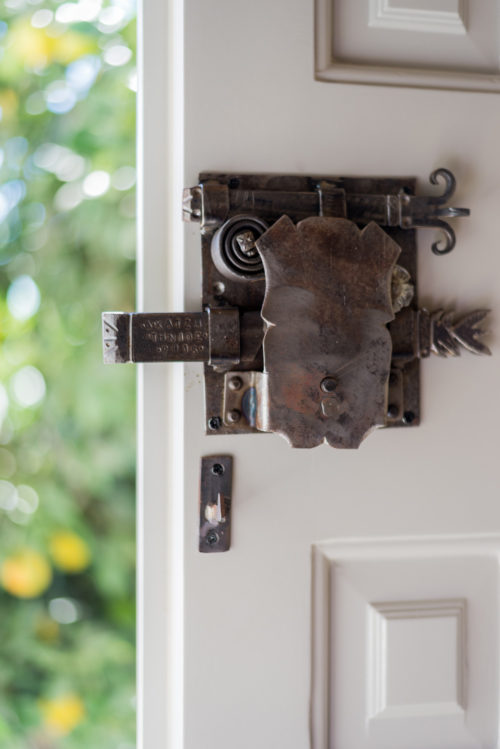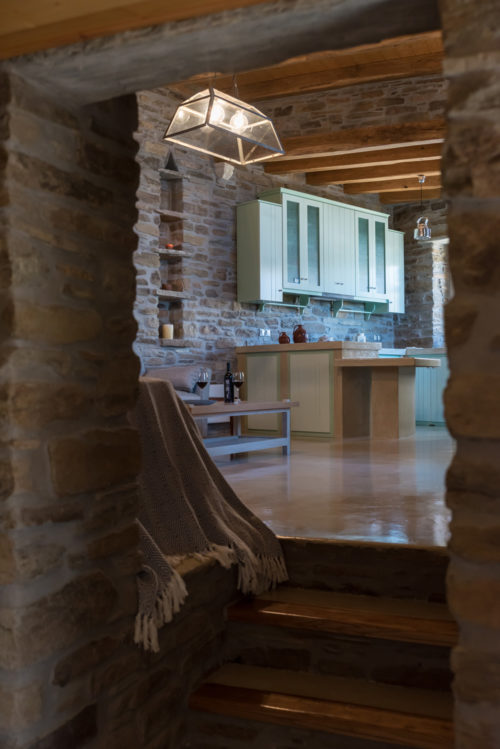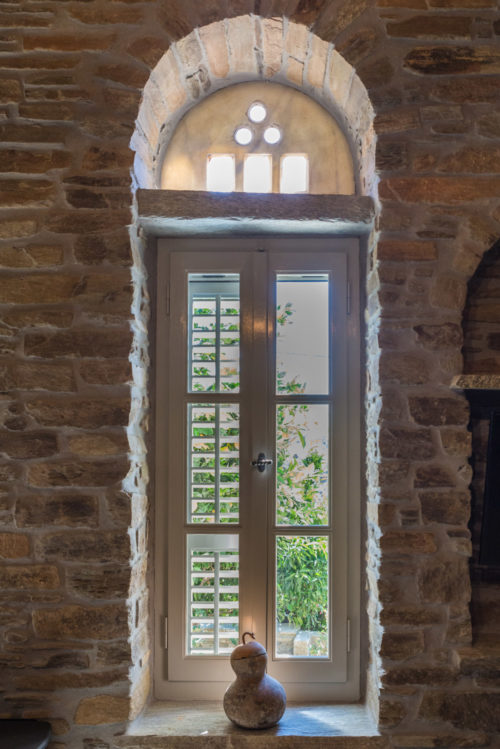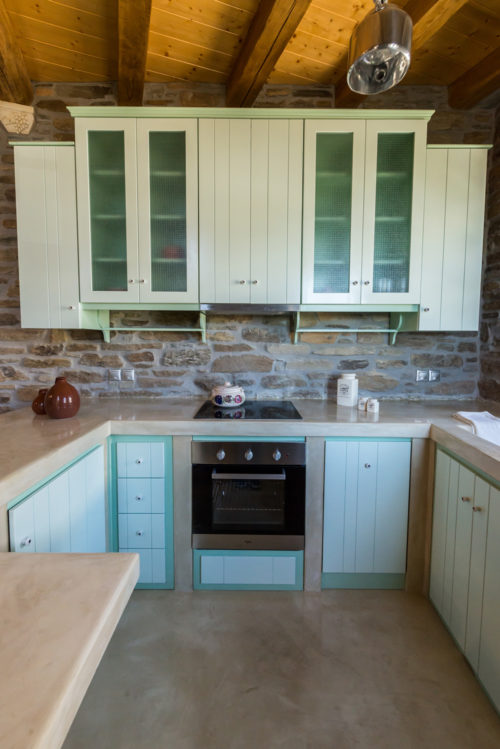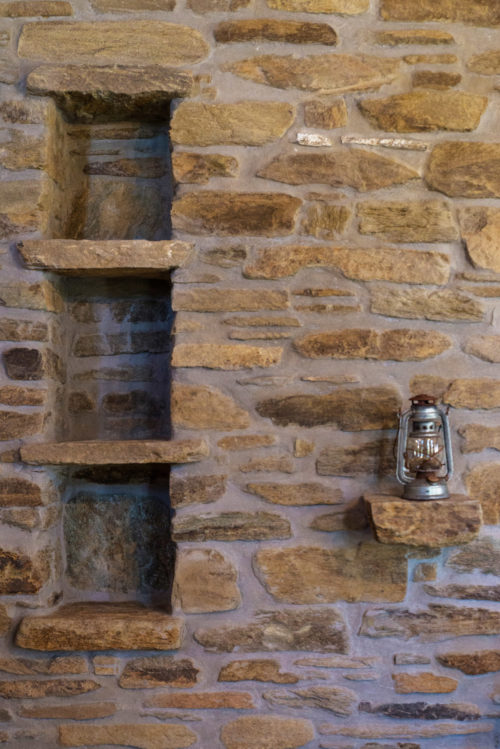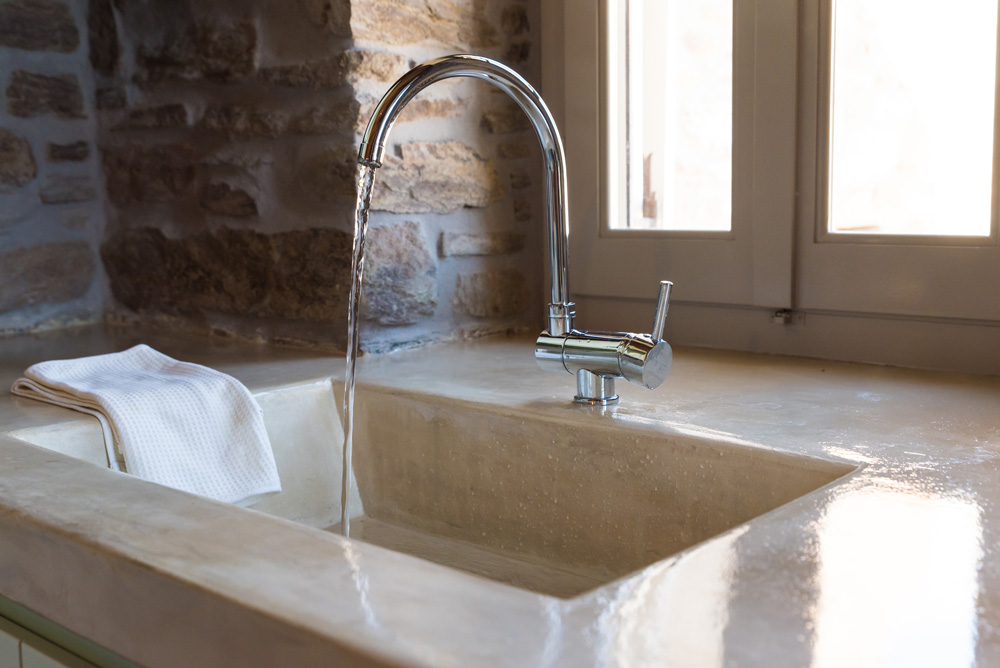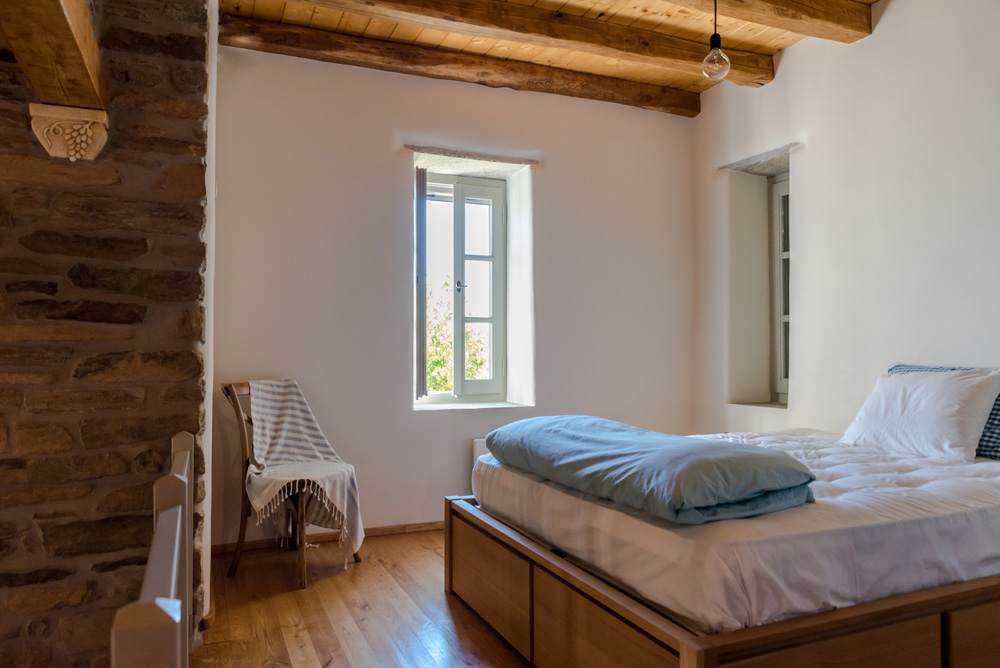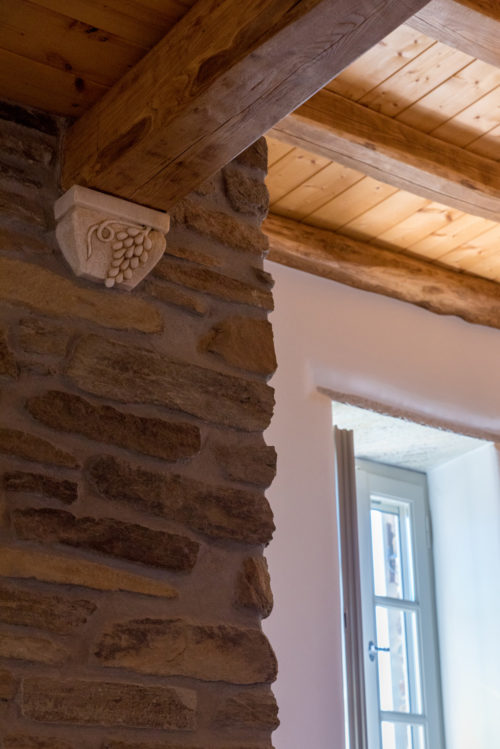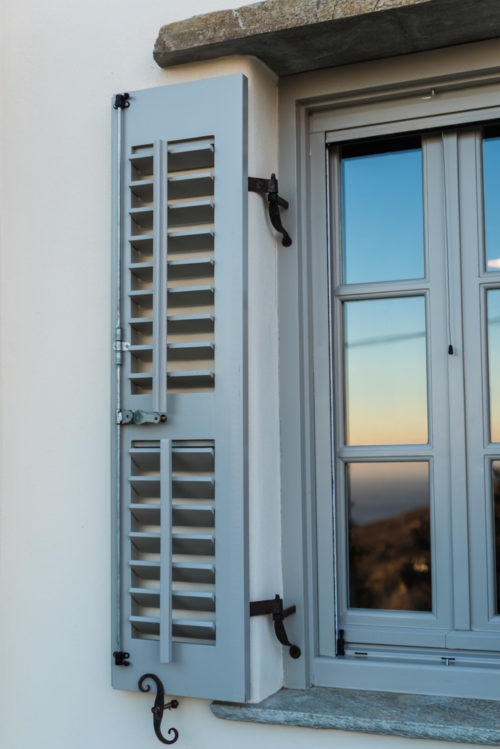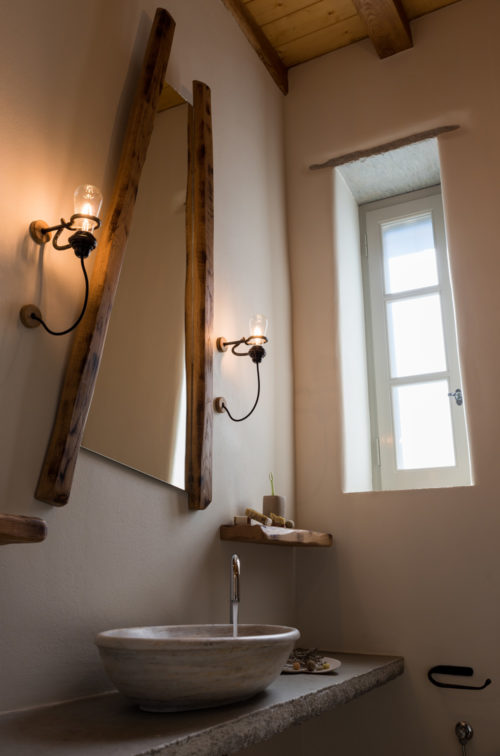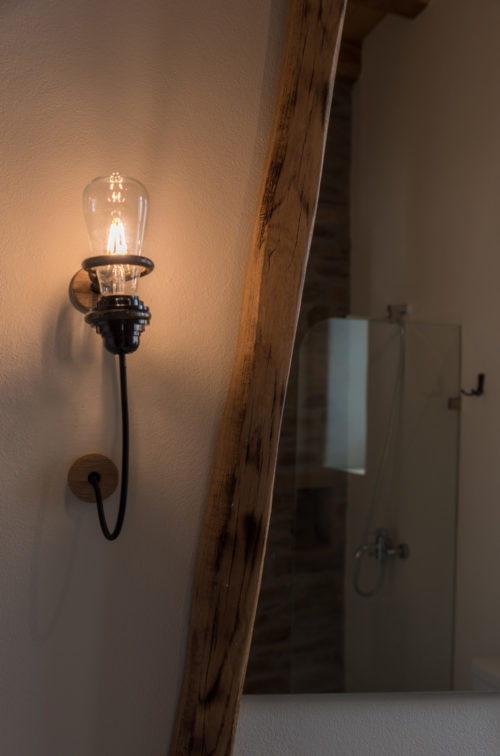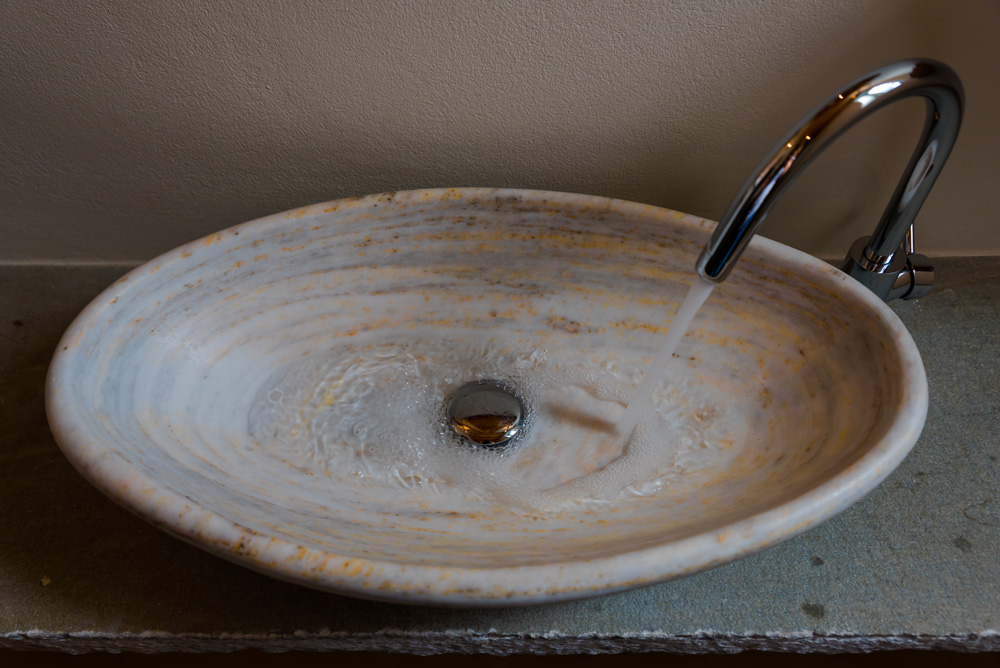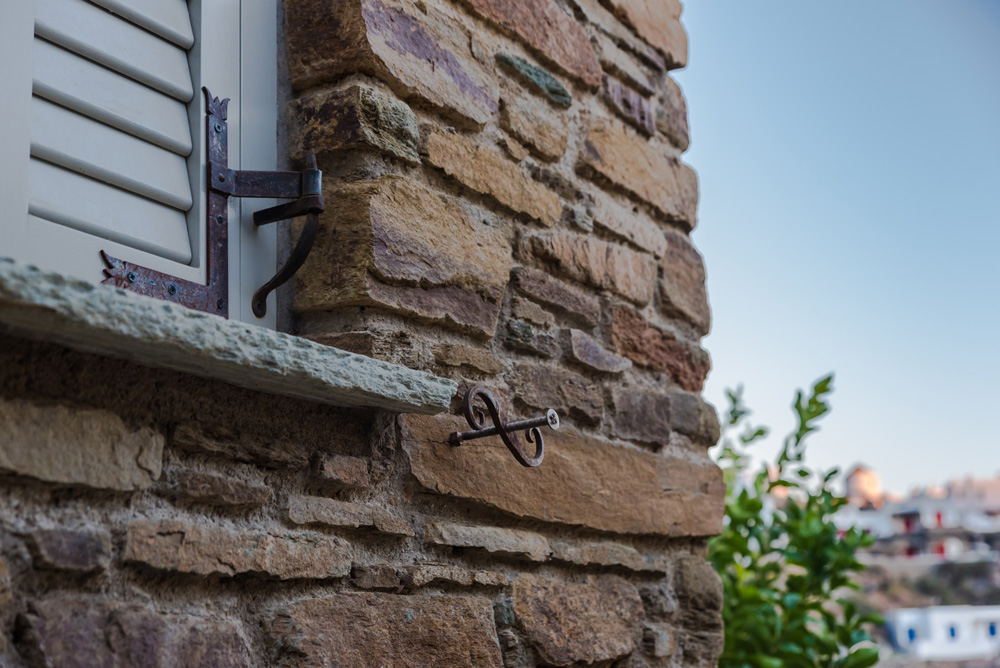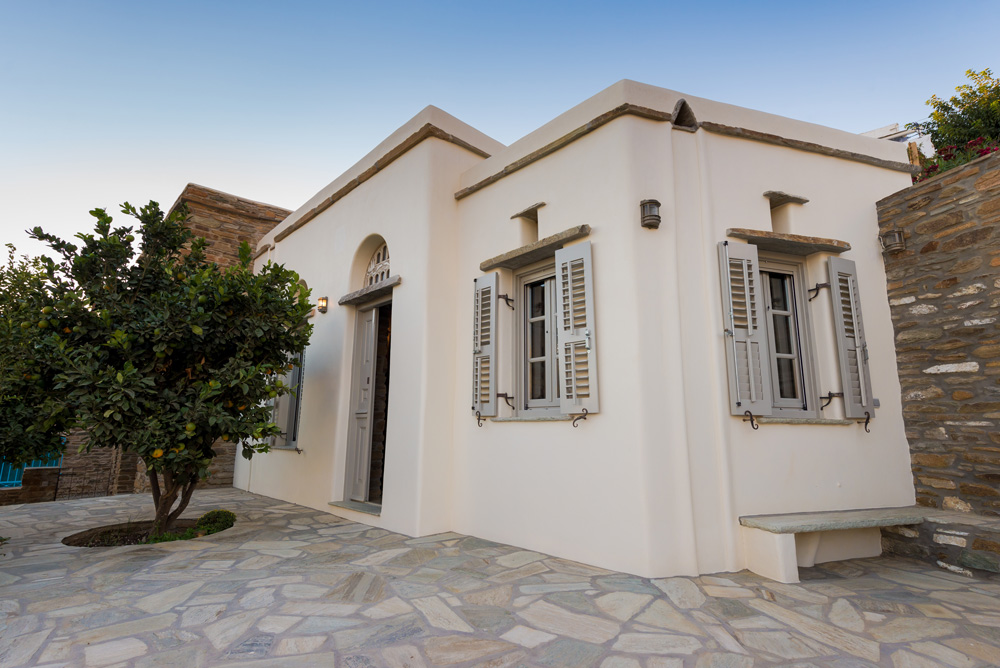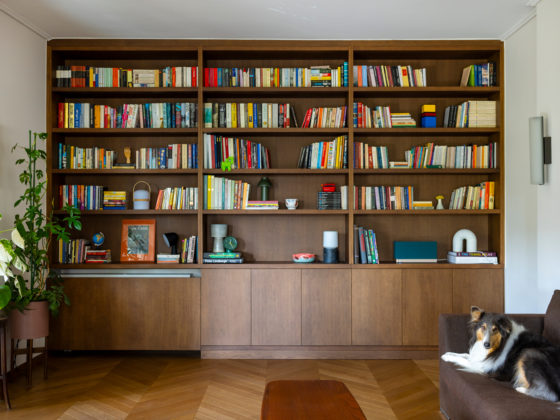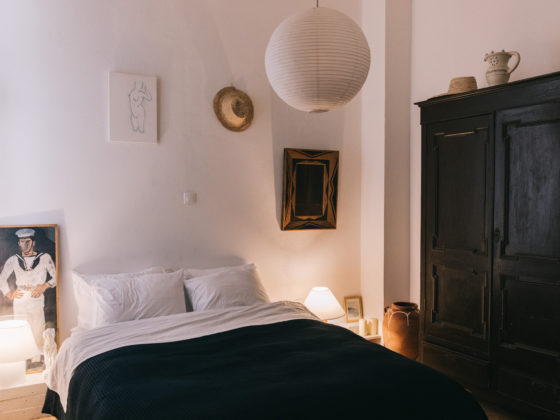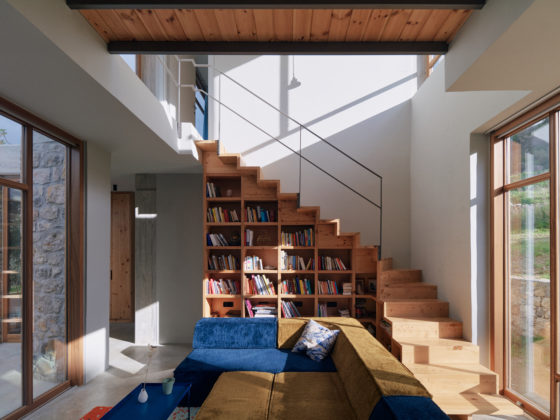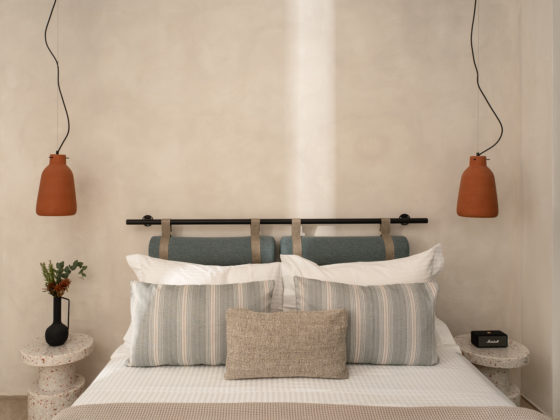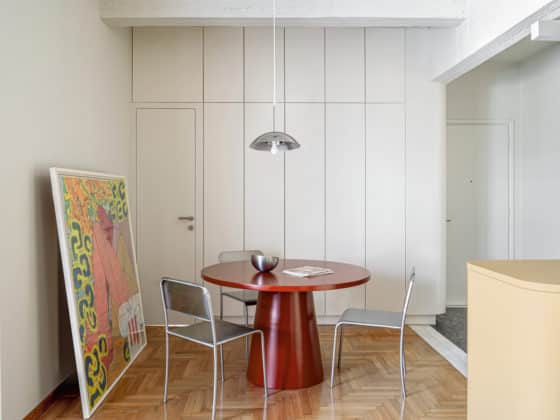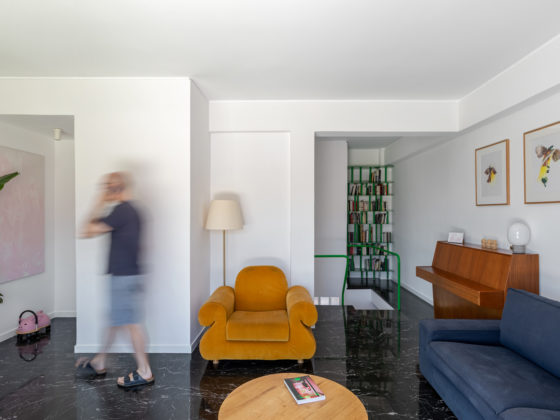“The project “Lithos Island Loft” is located within the traditional settlement of Triantaros in Tinos. It is the result of a collective experiential study of our architecture firm on the local architecture, and the continuation of previous architectural experiences we had there. It is worthwhile to understand the context around the design. The present house is, in a sense, a follow-up of the one opposing it; an archetypical 19th century Tinian house that belongs to the same family and that was recently restored by our firm.
As a continuation of the previous project, our goal was to develop a new housing experience for the owners, who wanted a contemporary perspective of a Tinian house. To achieve that, we combine the traditional materiality and its limitations, with the function of a loft. It is an open space whose functions are delimited through the change of levels. At the entrance level we find the living room and the kitchen, a few steps higher we find the bathroom, and even higher the bedroom. A second bedroom exists at a lower level relative to the living room.
We took exceptional care in using natural and ecological materials. The basic building material of the house is the stone-bearing masonry (50cm). Stone is a natural material found on the island and extracted near Triantaros village. Greek sheep wool is used for insulation. The roof insulation is made using kenaf cannabis fibres, a recyclable and environmentally friendly material. The concrete slab is supported by wooden chestnut beams. The Venetian shutters, which became an element of the local architecture during the crusades, contribute to creating a pleasant ambiance in the interior of the house.
We realized the project with the help of local craftsmen (stonemasons, carpenters, marble craftsmen, blacksmiths) who made everything by hand, including: marble handmade fanlights, iron hinges, marble sink, and our own sconces, which won the German Design Award in 2018. The result is a small residence that revives traditional architectural elements through the scope of popular wisdom.
Finally, as with every project we undertake, what makes this creation different is our particular approach, emphasizing personalization. Every person involved, from the craftsmen, to the owner and the architect, has contributed in their own distinct way. Our role as an architect is to make each one of these individual contributions -no matter how subtle- stand out and silently tell the unique story behind the creation of the building.”
